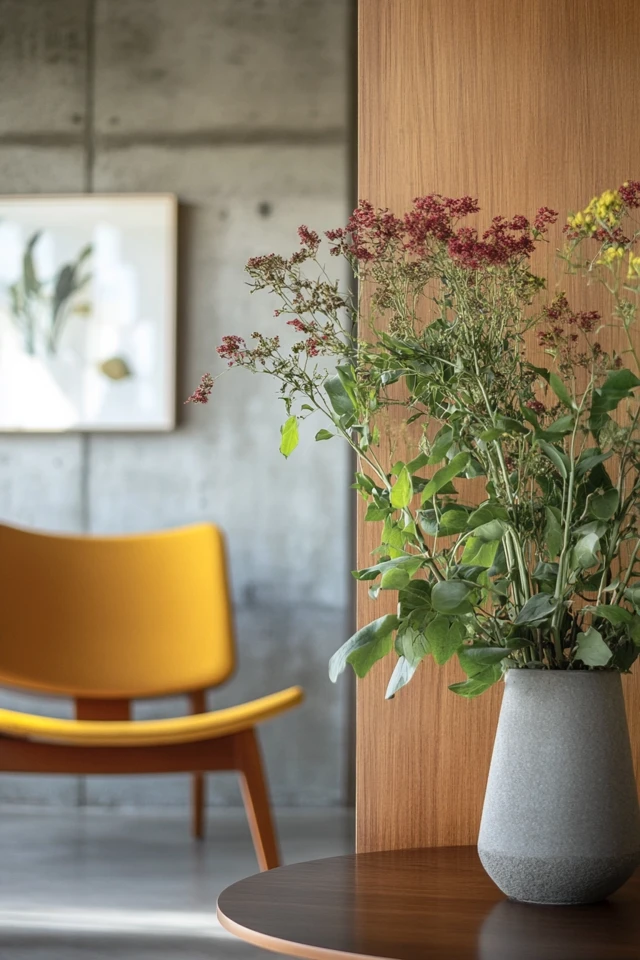Introduction
Mid-century modern interiors are celebrated for their timeless appeal, clean lines, and functional beauty. But there’s another feature of this iconic style that often goes unnoticed: the use of organic shapes. Inspired by nature and the human form, organic shapes bring softness and fluidity to the otherwise structured world of mid-century modern design. Think kidney-shaped coffee tables, curved armchairs, and wavy light fixtures—these forms inject a sense of movement and charm into a space, making it feel inviting and effortlessly stylish.
I vividly remember the first time I styled a mid-century modern living room with organic shapes. I was working with a space dominated by straight lines—rectangular sofas, a boxy bookshelf, and angular artwork. It felt rigid, almost sterile. Then I brought in a kidney-shaped coffee table, and everything changed. The table’s curved edges broke up the harsh geometry, creating a natural flow that made the room feel cohesive and warm. From that moment on, I became an advocate for the beauty of organic shapes in mid-century design.
If you’ve ever wondered how to incorporate these fluid forms into your mid-century modern interiors, you’re in the right place. In this post, we’ll explore what organic shapes are, why they work so well in mid-century design, and how to use them to elevate your space.
What Are Organic Shapes?
Organic shapes are forms inspired by nature. Unlike geometric shapes, which are precise and angular, organic shapes are irregular, curved, and free-flowing. Examples include:
- Curved Lines: Arched furniture or decor that mimics natural contours.
- Asymmetrical Forms: Pieces like kidney-shaped tables or irregular mirrors.
- Rounded Edges: Soft, rounded corners on furniture and accessories.
In mid-century modern interiors, organic shapes are used to balance the straight lines and minimalist elements, adding a touch of softness and movement.
Why Organic Shapes Work in Mid-Century Modern Interiors
1. They Add Warmth and Personality
Mid-century modern design can sometimes feel too structured or minimal. Organic shapes counteract this with their playful, approachable feel.
2. Inspired by Nature
The mid-century modern movement was deeply influenced by the natural world. Organic shapes echo the beauty of nature, making interiors feel more grounded and harmonious.
3. Create Visual Flow
Curved lines and asymmetrical forms break up rigid layouts, guiding the eye through a space and creating a sense of movement.
4. Timeless Appeal
The combination of clean lines and organic shapes has a timeless quality, making it easy to incorporate into modern interiors.
How to Use Organic Shapes in Mid-Century Modern Interiors
1. Start with Iconic Furniture
Mid-century modern design is full of iconic furniture pieces that embrace organic shapes.
- The Kidney-Shaped Coffee Table: A quintessential mid-century piece, this table adds a sculptural touch to any living room.
- The Womb Chair: Designed by Eero Saarinen, this chair features a rounded, cocoon-like shape that’s both stylish and comfortable.
- The Egg Chair: With its curvaceous silhouette, this chair makes a bold statement while maintaining mid-century elegance.
- Round Dining Tables: Opt for circular or oval dining tables to soften a room’s geometry.
2. Incorporate Curved Lighting
Lighting is an easy way to bring organic shapes into your home.
- Arc Floor Lamps: These lamps feature a sweeping curve that adds drama and movement.
- Pendant Lights: Look for fixtures with rounded or bulbous shapes, such as globe pendants or sculptural chandeliers.
- Wall Sconces: Choose sconces with soft, rounded designs for subtle organic charm.
3. Add Sculptural Decor
Small decorative pieces can have a big impact when it comes to organic shapes.
- Vases and Bowls: Look for ceramic or glass pieces with irregular or fluid forms.
- Mirrors: An asymmetrical or oval-shaped mirror adds a touch of whimsy to your space.
- Sculptures: Abstract sculptures with wavy or undulating lines make for striking accents.
4. Use Curved Upholstery
Furniture with rounded edges is both stylish and inviting.
- Curved Sofas: A crescent-shaped sofa makes a bold focal point in a living room.
- Ottomans: Choose round or oblong ottomans for a softer look.
- Headboards: A rounded or arched headboard can transform a bedroom into a mid-century haven.
5. Incorporate Organic Rugs and Textiles
Textiles are a great way to introduce organic shapes without investing in new furniture.
- Rugs: Choose rugs with wavy patterns, abstract designs, or irregular shapes.
- Throw Pillows: Look for pillows with curved or rounded patterns, or opt for asymmetrical designs.
- Curtains: Flowing, floor-length curtains in a soft fabric can add a sense of movement.
6. Balance Organic and Geometric Shapes
For a cohesive look, balance organic shapes with mid-century modern’s signature geometric elements.
- Pairing Tips: Combine a kidney-shaped coffee table with a rectangular sofa, or place a circular mirror above a linear credenza.
- Color Coordination: Use a consistent color palette to tie geometric and organic pieces together.
7. Bring in Natural Elements
Organic shapes pair beautifully with natural materials, which are central to mid-century modern design.
- Wood Furniture: Look for pieces with curved edges or rounded legs.
- Stone and Marble: Use organic materials in free-form shapes, like a stone-topped side table or a marble tray.
- Plants: Lush, leafy plants like monstera or ferns bring a natural, organic touch.
Picture Gallery
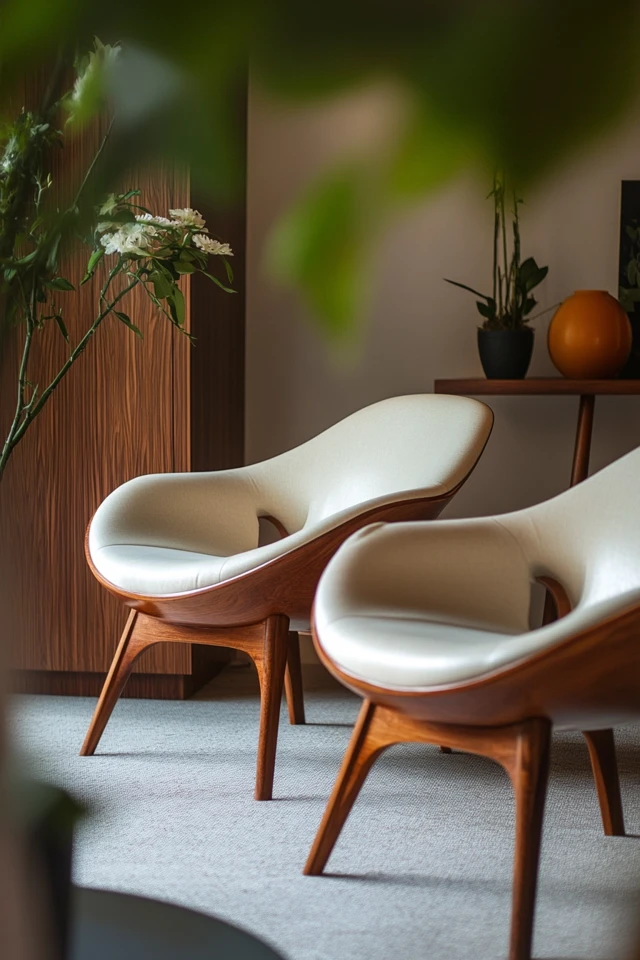
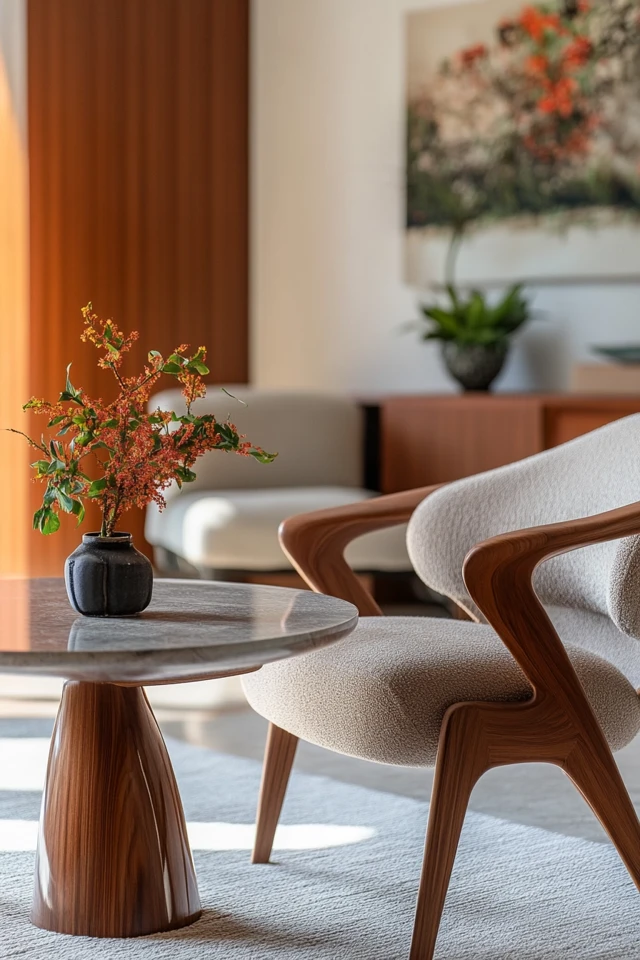

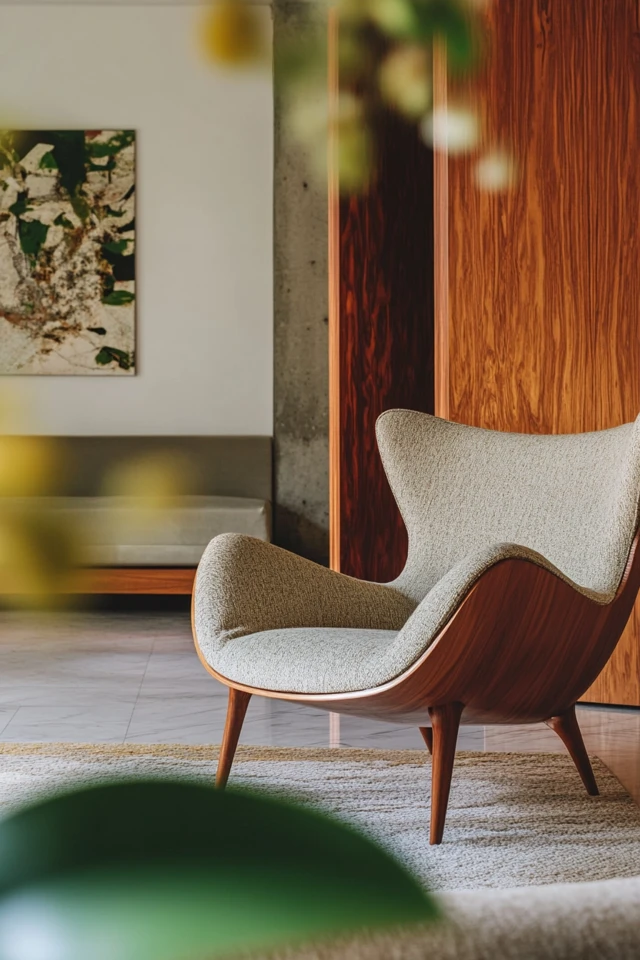
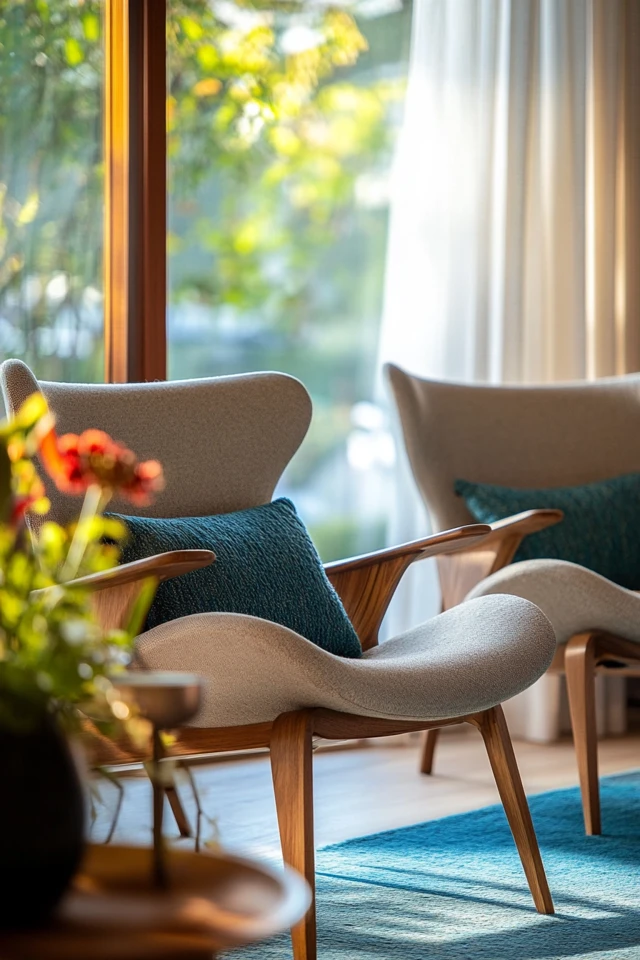
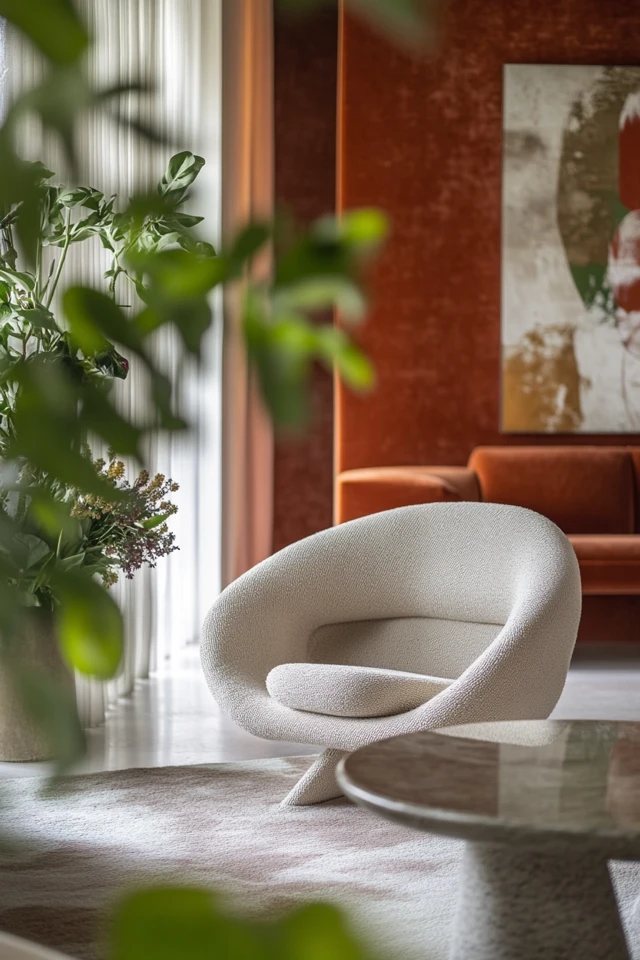

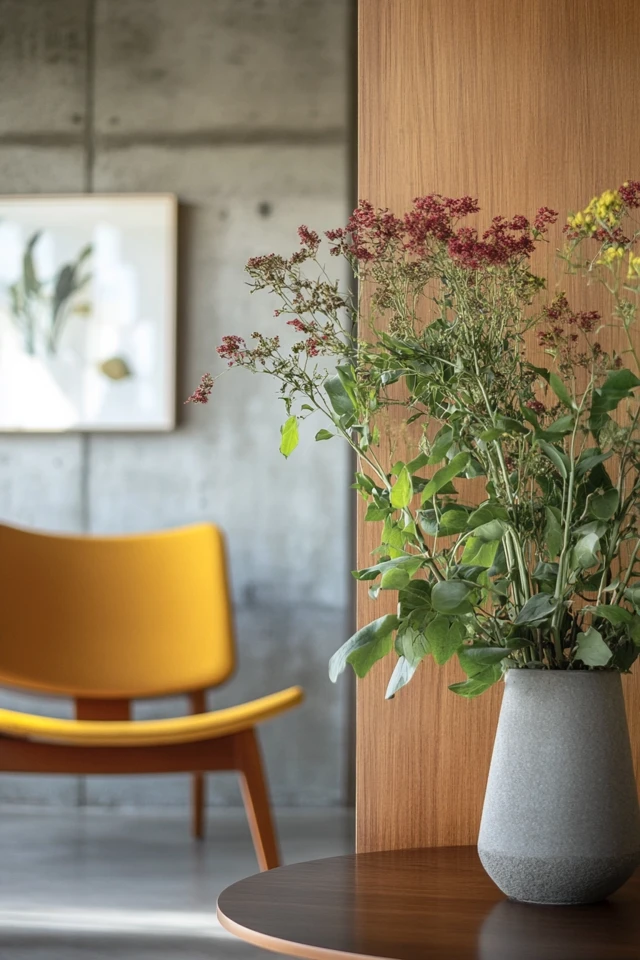
Tips for Styling with Organic Shapes
1. Start Small
If you’re new to organic shapes, begin with smaller items like a vase, mirror, or rug.
2. Keep it Balanced
Don’t overdo it—organic shapes should complement your space, not dominate it. Pair them with clean lines for contrast.
3. Focus on Flow
Arrange furniture and decor to guide the eye naturally through the space. For example, place a curved sofa to face a focal point like a fireplace.
4. Stay True to Your Style
While organic shapes are a hallmark of mid-century design, they can also work in eclectic, contemporary, or boho interiors.
Conclusion
Organic shapes are the secret ingredient that brings mid-century modern interiors to life. They soften hard edges, create visual flow, and add a touch of playfulness—all while honoring the design principles of this timeless style.
Whether you’re incorporating a kidney-shaped coffee table, a sculptural vase, or a curved sofa, these shapes have the power to transform your space. I’ve seen this transformation time and time again in my own work. A well-placed organic piece can take a room from feeling static to dynamic, from cold to welcoming.
So, start experimenting! Mix and match organic and geometric forms, play with texture and color, and let your space reflect the beauty of nature and design. With these tips, you’ll create a home that’s as stylish as it is inviting.
FAQ
What defines an organic shape in interior design?
Organic shapes are inspired by nature and feature curved, irregular, or asymmetrical forms. They contrast with geometric shapes, which are more structured and angular.
Can organic shapes work in small spaces?
Absolutely! Smaller organic pieces, like a curved mirror or an irregular rug, can add visual interest without overwhelming the space.
What colors work best with organic shapes in mid-century modern interiors?
Earthy tones like olive green, mustard yellow, rust, and walnut pair beautifully with organic forms. Neutral colors like white, beige, and gray also work well.
How can I balance organic and geometric shapes?
Pair curvaceous furniture or decor with straight-lined pieces to create contrast. For example, combine a kidney-shaped coffee table with a rectangular sofa.
Where can I find mid-century modern pieces with organic shapes?
Look for furniture and decor at retailers like West Elm, CB2, Article, or vintage shops. Online marketplaces like Etsy and 1stDibs also offer unique mid-century-inspired finds.

